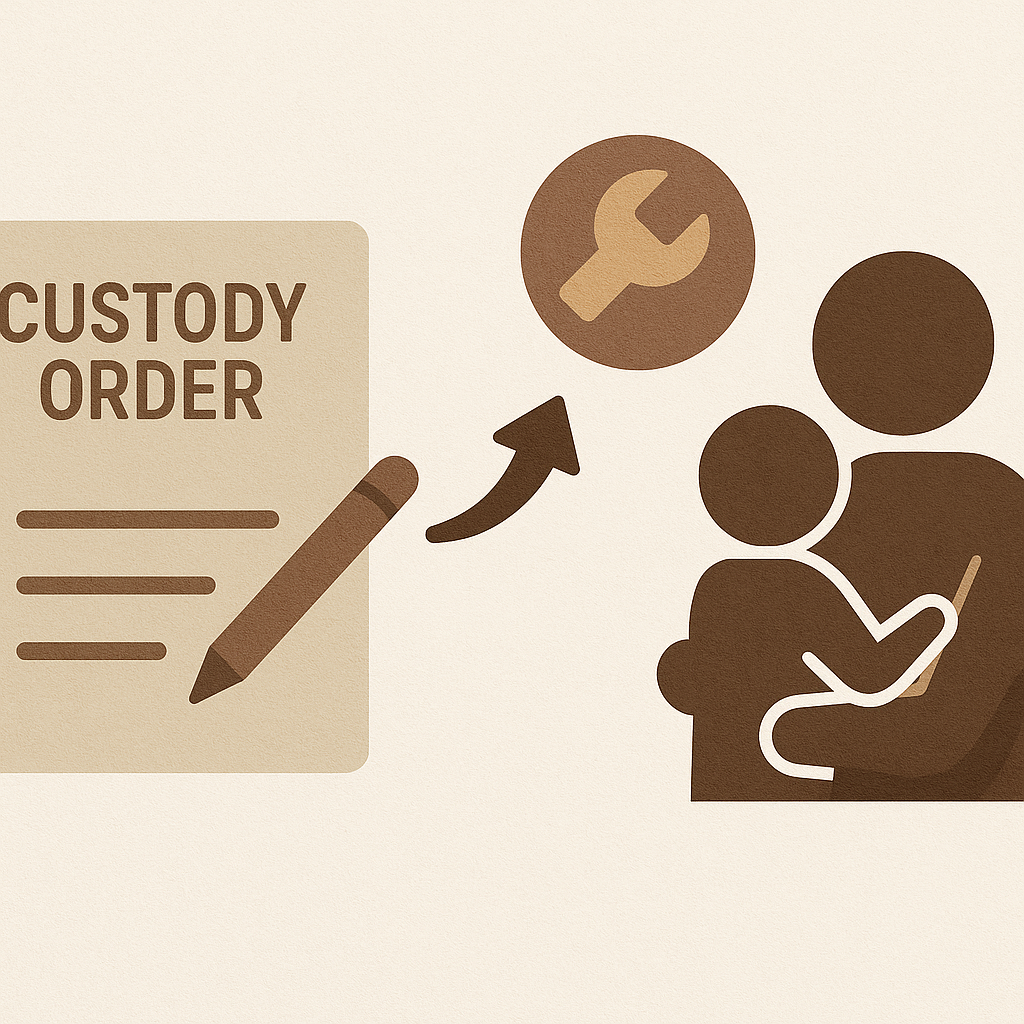Modify a Utah Custody & Child Support Order
When Utah lets you change an order, the forms you need, and how to prove a material and substantial change
Utah Law Explained gives you a Utah-focused answer first, then the exact steps, forms, timelines, and common mistakes. You can modify a custody or child support order in Utah, but only if you meet the legal standard of showing a material and substantial change in circumstances.
Why does this matter? Life changes — income shifts, kids grow, schedules move. Utah courts recognize this, but they won’t reopen an order without proper grounds and process. By the end, you’ll know how to approach a modification with confidence.
Material & Substantial Change: What Counts
Before you file, you must show there’s been a meaningful change since the last order. Minor inconveniences or disagreements aren’t enough.
Income or Employment
Significant change in income or job status can justify modifying support.
Relocation
A move that affects parenting time or school routines may qualify.
Child’s Needs
New health, therapy, or educational needs impacting custody/support.
Plan Interference
Ongoing interference with the current plan or missed parenting time.
Choose the Right Forms & File
Pick the correct petition, complete it carefully, and file in the proper Utah district court. Many cases stall over incomplete paperwork.
After filing, you must properly serve the other parent using Utah-approved service methods, not regular mail.
Service, Hearings & Temporary (Interim) Orders
Service of Process
Contested Hearings
Temporary Orders
Step-by-Step: Modify Your Order
Confirm Grounds
Identify the material change and gather proof.
Complete Forms
Use Petition to Modify Custody or Petition to Modify Child Support (or ORS process for support).
File & Serve
File with the district court, pay the fee or request a waiver, then properly serve the other parent.
Seek Temporary Relief
When needed, file a motion for temporary orders with supporting documents.
Prepare for Hearing
Organize evidence showing both the change and the child’s best interests.
Final Order
If granted, the new order replaces the old one and is fully enforceable going forward.
Need Help Applying This to Your Situation?
Every family is different. If you’re unsure whether your facts meet Utah’s standard or how to present evidence, a short consult can help.
Talk to a Utah AttorneyVideo & Social Learning Hub
Key Takeaways
You must prove a material and substantial change since the last order.
File the right petition, serve properly, and be ready with best-interest evidence.
Temporary orders can provide short-term relief and often influence the final outcome.
This page is legal information, not legal advice. When in doubt, get counsel before you file.
Next Step
Gather your documents, confirm your grounds, and plan your filing. A brief consult can help you avoid mistakes and delays.
Book a Modification ConsultWe’ll help you understand the forms, service, temporary orders, and what to expect at a hearing.
